-
Posts
1,262 -
Joined
-
Last visited
Content Type
Profiles
Forums
Events
Store
Posts posted by Andrej Stancak
-
-
So, whose microphone if not Officer McLain's was left open and caused the recording of sounds in the Police channel 2?
-
To follow up on the problem of shirt CE151, the maroon shirt with button-up collar, here is a preliminary analysis of the Darnell still using a method similar to Tom Wilson's method. Briefly, a very large copy of Darnell doorway (45 x 60 cm) made on a heavy matte paper is photographed using a near-infrared sensitive camera (Basler Ace2) in the light spectrum including invisible light (>780 nm) and registered at 12-bit resolution. During the recording, the photograph is being excited using 10 Hz flashes produced by a xenon bulb. Images are recorded at 30 Hz. The whole purpose is to excite the photograph to include both reflected and scattered light that is visible in near-infrared or infrared band in hope to extract some more information. As I am pursuing the shapes and distributions of the dark spots on Prayer Man's shirt, extracting more information about the gradation of dark tones (those are getting warmer when illuminated and could therefore stand up from the background in near-infrared light spectrum) using this approach appears promising.
The work is ongoing and I still do not understand all aspects of the method as I would like to (and did not test all possible variations of the method), therefore, I decided to show at least some intermediate images before this mammoth project is eventually completed.
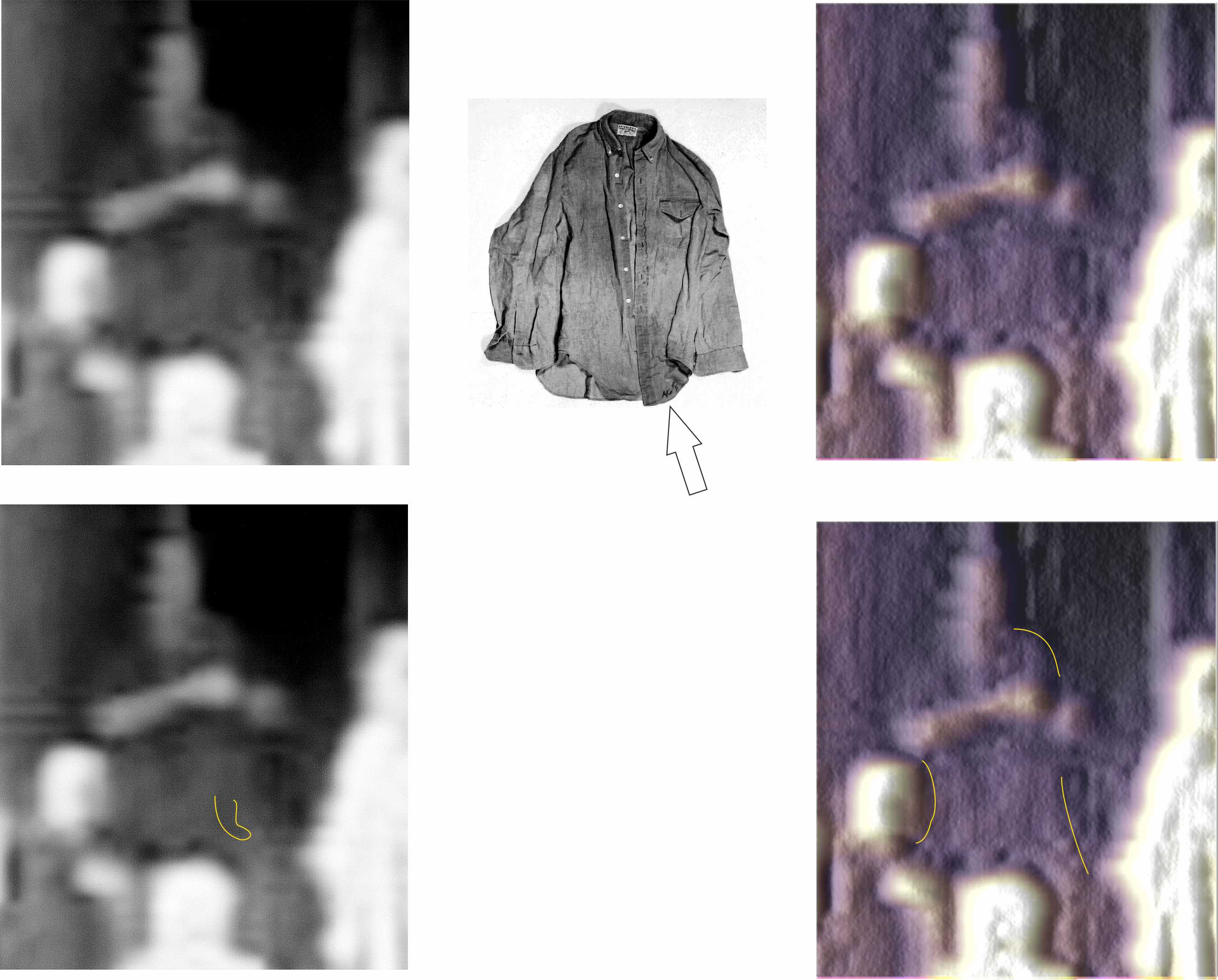
In the composite above, the top left panel is an average of a 40-second recording (1200 images) that is used as an input for ImageJ analysis (top right). The "original" picture already shows some interesting features, such as much better separation of Prayer Man's figure from the background, especially on the left side of his body. The 3D scaled image (top right) shows the contours of Prayer Man body even better. His hairline and dark hair are visible quite clearly. The middle panel is the CE151, the one which is contained in Warren Commission Exhibits. it was converted into grey scale and the contrasts were enhanced.
There are quite large dark spots on the right front facing on CE151, and one triangular spot in the lower left part of the front facing. I have highlighted a spot on Prayer Man's shirt which I believe could be at identical location as in CE151. Further, the spot appears to be bent to the front and left as if the shirt was following the extended left thigh.
The comparison of the dark spots on shirt CE151 and the spots on Prayer Man's shirt is not trivial as Prayer Man is standing parallel to the western wall and therefore, we cannot see the shirt face as a flat surface, it is rounded and vanishing as the shirt is wrapped around the trunk. One of the next steps will be preparing the copy of CE151 (basically, to modify a shirt which is already quite similar to CE151), and create all folds and dark spots as in original CE151 and use that shirt to photograph Prayer Man under the conditions similar to Darnell's still.
Late edit: the composite picture below highlights in the lower panels the similarity between the large dark spots on Prayer Man's shirt and on shirt CE151. Of course, it is difficult to evaluate how accurately would the shapes of the spots in both shirts match because of folds in shirt CE151, flat vs. convex surface in CE151 and Prayer Man's shirt, and the slightly different relationships between left and right front facings in both shirts (due to the lower one or two buttons missing, there was considerable freedom in how exactly were the lower parts of the shirt aligned).
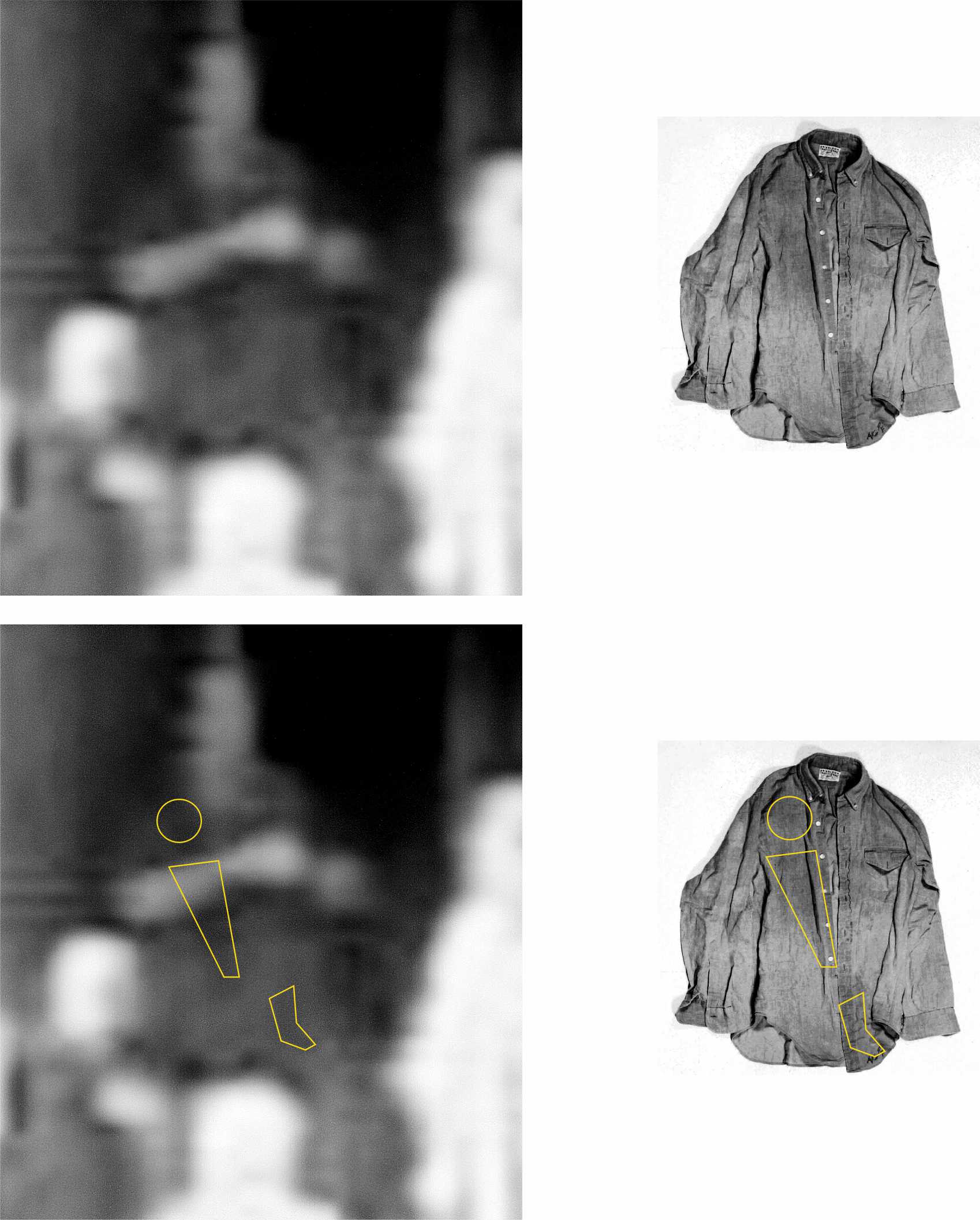
-
Steven:
I am sure, knowing that you studied the case for so long, that you are aware of late Sherry Fiester's work on the shot from the South Knoll (from the front and left of the limo). Sherry Fiester in her book "Enemy of the Truth, Myths, Forensics and the Kennedy's" assassination proposed a trajectory for the final shot that would originate at South Knoll and cross tangentially through the head to exit in the right parietal area. It is conceivable that a South Knoll shot actually entered the head in the left temple.
I do not want to misinterpret David Lifton's opinions, however, I believe he considers a shot to the left temple as a serious possibility.
-
There may be an interesting corroboration of the finding of two exit holes in the upper right parietal area of President's head. The lower of the two pictures is my reconstruction of the head wound from Mary Moorman's picture and the upper picture is the result of Tom Wilson's reconstruction. For details of my method, please scroll back through this thread.
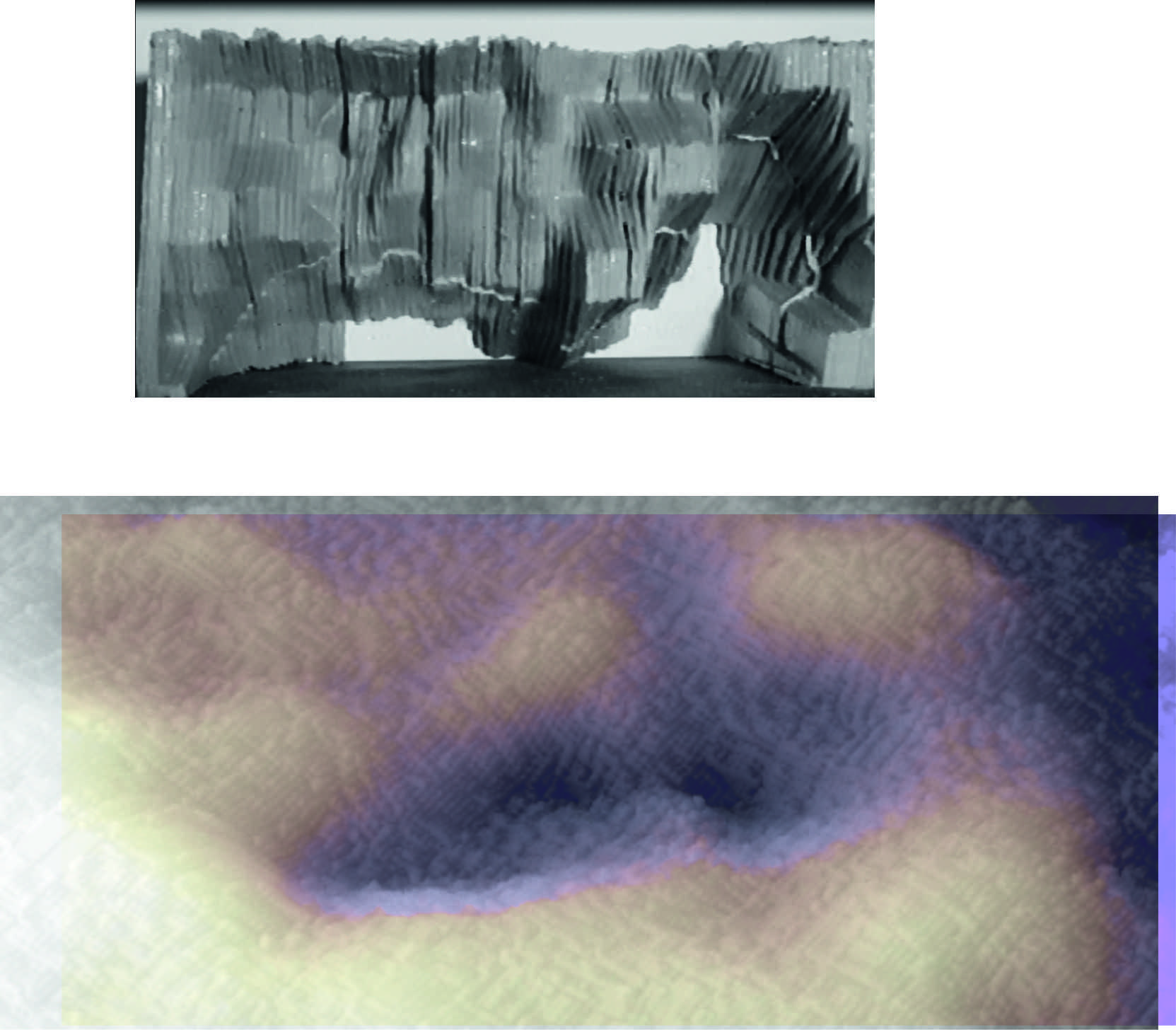
There seem to be two exit tunnels in the Kennedy's upper right parietal region. In the book "JFK Breaking the Silence" by Bill Sloan (Taylor Publishing Company, Dallas, 1993), the chapter named "The Assassin's Tale" contains the story of Sgt. Hugh Higgins who was a CIA trained operator working on orders of Kennedy's family since 1955. Robert Kennedy sent a message to the local air base at 12.45 PM (Dallas local time) to get Higgins to Dallas to investigate the assassination on behalf of Robert Kennedy. On the same day later, Higgins also travelled to Bethesda to attend the autopsy.
Higgins arrived in Bethesda about at 6 PM and witnessed two caskets being offloaded, a plain, grey casket and an ornate, bronze casket.
This is what the book says about Higgins's autopsy recollections (pp.183-184):
"I distinctly saw an entry wound in the left temple", he says. "To my knowledge, only two other people besides myself have admitted to seeing this wound. It was assumed to be a blood clot by the doctors at Parkland, but it was an entry wound, and it could not have been fired from the rear".
"The bullet from this wound exited the right side of the president's head, blowing out a section of skull and obscuring the entry (?, exit, AS) wound of a second bullet that struck him from the right front almost simultaneously. There were two large, separate holes in the upper right side of the head, separated by about three quarters of an inch of bone matter and skin tissue".
This rare description of the wound in the right parietal area appears to match the two photographic reconstructions quite well.
-
Jim:
The HSCA (Moriarty and someone who could be his assistant) arranged for two tape recorders to be used. After the interview was over, Moriarty would take one tape to Washington, DC, for transcript to be made. Frazier was then to receive both a copy of the transcript and one tape. He may still have both these documents.
I do believe that the copies of the tapes which Denis Morissette obtained from the NARA can be cleaned, and we should be able to listen and make own transcripts from some important parts. I am actually not listening to the tapes, rather trying to clean them up. The small part was at the transition between two large sections (sessions?) and this was when I could hear that bit.
-
6 hours ago, Denis Morissette said:
Dennis:
I work in the photograph in the middle (Darnell) as I believe that it offers cues allowing to check if this person could be Lee Harvey Oswald. The lady with the camera does not seem to be, in my opinion, a suitable candidate for Prayer Man because Prayer Man has a male type baldness (an initial stage called Type II) whereas the photo in the left panel shows a woman. The photograph in the right hand panel appears to show a partial view of a person who could be the old lady seen in Martin film or someone else.
-
I started to denoise the HSCA tape recordings using standard audio tools and experienced some success, and hope that the whole, almost 4-hour long recording will be suitable for listening. However, to my great surprise, as I was cutting the long recording into sections, I heard that the transcripts of the tapes have been done in Washington (this is what Commissioner Moriarty told Frazier and his attorney, his name sounded like Hallenbeck?) but what is even more interesting than the now missing transcripts is the fact that two different tape recorders were used to record the interviews and the other tape was promised by Moriarty to be given to Buell Wesley Frazier. Thus, Mr. Frazier likely has of one of the two tapes and a copy of the transcript.
I will keep the Forum informed, however, I cannot see reasons for not being able to clean the recordings since the noise (the hissing and humming) was obviously caused by the tape recorders themselves and the line interference. Of course, there may be epochs in the recordings which may not be possible to recover.
-
Greg:
there may be a way to extract speech signals from the noisy HSCA recordings. Matlab offers a deep learning algorithm and even provides a GUI. I cannot promise to embark on this project at the moment due limited time and many other projects, however, if anyone would be willing to try it, here is the link:
https://www.mathworks.com/help/deeplearning/ug/denoise-speech-using-deep-learning-networks.html
-
The potential of Darnell stills to unequivocally determine the identity of Prayer Man is, of course, limited by the amount of information the stills contain. However, the stills can tell us a lot about Prayer Man to narrow down the range of candidate persons or exclude them outright (such as Sarah Stanton with her thick blonde hair which just does not match Prayer Man's hair).
The situation with Prayer Man's figure is similar to that of the figure of Buell Wesley Frazier in the same stills. In the image below, while details of Frazier's face in Darnell are not too conspicuous, we would still be able to refute Frazier as a candidate person because the image gives some good cues: the dark colour of hair, the body height, the shape of hairline and the polo type of shirt. Even in absence of details on face of Darnell's Frazier, it is possible with a very high probability to accept the possibility of Frazier being the man depicted in Darnell. His testimonies in which he placed himself into the shadow of the top landing in the western part of the doorway contribute to the acceptance of the possibility of Buell Frazier being the man there.

The situation regarding identification of Buell Wesley Frazier in Darnell is not so different to Prayer Man' situation. There is little chance to retrieve Prayer Man's facial features, however, the information contained in Darnell allow to narrow down the range of candidates and refute some unlikely candidates outright.
What information regarding Prayer Man is possible to be retrieved positively and objectively from Darnell?
- the dark tone of Prayer Man's hair suggesting dark brown or black colour of that person's hair.
- the shape of the hairline. The hairline shows the Type II male baldness.
- Prayer Man's body height.
- Prayer Man's male gender.
- Prayer Man's race of White Caucasian.
- Prayer Man's posture (with left feet forward and weight resting on the right foot).
- the type of Prayer Man's shirt - it was not a polo shirt but Prayer Man's forearms are bare, therefore, the shirt sleeves were rolled up to the elbows.
- the shirt was open in the neck region.
- the greyness of the shirt in Darnell's representation of Prayer Man's figure matches the grey colour of Prayer Man's pants (even if details of pants are not seen).
It is also possible to infer on the range of colours which can yield the level of grey tone of Prayer Man's shirt, and the potential colours included the light red (maroon) and green colours as the first candidate colours. This analysis awaits replication.
There may be one more feature, in my view the most important one, allowing to narrow down the candidates even more, basically to only one person. This feature refers to the distribution of large dark spots on Prayer Man's shirt which appear to match the spots on shirt CE151 (the NARA 1963 picture of this shirt rather than the version which NARA sent to Pat Speer in 2016).
Notably, none of the features listed above contradicts the possibility of Lee Oswald being Prayer Man. If Lee Oswald was not Prayer Man, at least one of the features would be different to what we know about Lee Oswald's figure and clothing he wore on that fateful Friday.
-
Jonathan,
thanks for your opinion.
-
2 hours ago, Jonathan Cohen said:
because... it's not him.
And how do you know Prayer Man is not Lee Oswald?
-
Sandy:
please post or send me the piece of Darnell you would like to test and I will work on it.
The image resolution is an important aspect in any analysis, however, I guess, some details can be seen in spite of comparatively low resolution. It is as if Prayer Man's figure would be sampled with a grid of about 1 cm or slightly less. Some very fine features will not be seen but aspects such as hairline can be seen even with this low resolution. A good interpolation during resampling does not add any new information to the image but helps to perceive the contours of known objects because our mind understands that there should be a linear continuum between two grid points on an object.
Here is the frame I used to cut Prayer Man's figure. The size of the image is 654 x 450 pixels which is a fairly sized photograph. Please indicate the region you would like to use in the analysis and I can cut it from a TIF version of this image (for Internet posting, most platforms ask for a JPEG which entails some loss of information.)
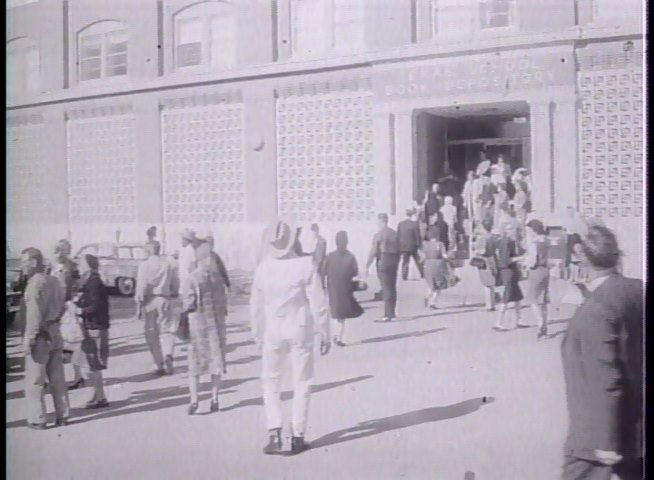
-
Sandy:
I have made a few tests with the blind deconvolution method in Matlab which method you mentioned a couple days ago. Here is the typical result I receive after applying the method to Prayer Man. Prayer Man image was resized from 25x25 pixels to 600x600 using bicubic interpolation. However, I also tried simple interpolation (increasing number of pixels) of different sizes as well.
The example below shows the input image (Prayer Man from Darnell after bicubic interpolation) (left panel), the recovered, deblurred image obtained with 15 iterations (middle), and the point-spread function which the program designed for this image. If I increase the number of iterations, the recovered image becomes very distorted.

The results are not great. I cannot see more details on Prayer Man in the deblurred image compared to the original image. One useful aspect is that the Prayer Man shoulder appears to be leaner in reconstructed compared to the original image, possibly due to suppression of some reflections on the glass window in the background. I see such narrow left shoulder in my experiments with Tom Wilson's method. I will need to make changes in my 3D model of Prayer Man because I was actually modelling the wider shoulder and upper arm.
Taken together, this interesting option may not be that useful in case of Darnell's image, however, it may be useful for some other images. Thanks for pointing to the blind deconvolution method, I was able to learn something.
-
Mathias:
in principle, you could do the single-image super-resolution enhancement under Matlab on a standard laptop. However, you may need to run it for days if you would also want to do the training. Having Nvidia graphics card would be an advantage because Matlab, similar to Dr. Rudin's code, also deploys the computations to the graphics card processor. It may be better to upload their pretrained network and only enter a Prayer Man image to test the network. It may work but it may not and then you would start wondering if the training could be a culprit and would return to the training phase anyway (like using only face images in training phase if Prayer Man's face is being tested). Please let me know if you want to give it a try, maybe I can help.
-
Sandy:
a good piece of searching on your part. Matlab is my daily bread, however, I did not know about the blind deblurring algorithm function in Matlab. I will give it a try and post any result or experience with it.
-
We have authentic handwritten notes taken by FBI agent James Hosty during the first interrogation session with Lee Harvey Oswald on Friday, November 22. The notes were uncovered by Bart Kamp last year and it is the most direct and indisputable evidence of Lee Oswald being in Domino lunchroom on the first floor during the time when motorcade appeared on Dealey Plaza. It is worthy to recall this important discovery again. It says "He went to the 2nd floor to get Coca Cola to eat with lunch and returned to the 1st floor to eat lunch. Then went outside to watch P.Parade."

The question is when did Lee Oswald get to the doorway if he was sitting in Domino room and yet he stood, as some researchers surmise, at the western wall of the Depository doorway in Wiegman film. Here is an attempt to reconstruct Lee Oswald's movements before he appeared in the doorway.
The first question to answer is how much time did it take to a young man to walk swiftly (not running) from Domino room to the western wall of the doorway. Here is a plan of the 1st floor with a trajectory of movements from Domino room to the doorway. The figures next to segments of the route stand for the velocity in that segment. A straight segment in the corridor without obstacles would be walked at a speed 1.79 m/s whereas opening a door would be at a considerably slower speed (0.45 m/s - tested using stopwatch and different doors). The final passage from the glass door to the western wall was estimated to occur at 0.5 m/s.

The total distance of the route connecting Domino room with the western wall was 26.2 m and the approximate total walking time was 24.05 ms (rounded to 24 s).
In the next, I used Mark Tyler's excellent animation https://www.marktyler.org/mc63.html to identify time stamps of a few events. The time when President's limo appeared at the Dealey Plaza (the curve from Main onto Houston street) occurred at 12:29:21 and this was the time when a number of people at Dealey Plaza started to cheer the incoming motorcade. This could be the moment which led Lee Oswald to a decision to go out and find out what was this excitement about.
The next significant moment is the time when President's limo passed the Depository entrance and this period is depicted in Hughes film. I spent a lot of time exploring Hughes film and could not find any evidence of Prayer Man's presence during the moment when the motorcade was in front of the doorway. The time when the limo was passing the the entrance of the building was 12:29:46. Finally, Prayer Man is seen in Wiegman film and Wiegman's camera captured the doorway about at the time of the last shot (12:29:59). Thus, Lee Oswald could enter the doorway only during a specific time interval falling between the instant when the limo was in front of the Depository entrance (depicted in Hughes) and the instant corresponding to the final shot (equivalent to the onset of Wiegman's filming of the Depository building). This interval would be 13 seconds, however, since Prayer Man was not at the western wall in Hughes and it takes about 2 seconds to move from the glass door to the western wall, the 13 second interval needs to be cut by 4 seconds (2 seconds after the Hughes event and 2 seconds before the Wiegman event). This results in a 9-second interval during which Prayer Man could occur in the doorway if he was coming from the inside of the building. The 9-second interval in real time would start at 12:29:48 and end at 12:29:57.
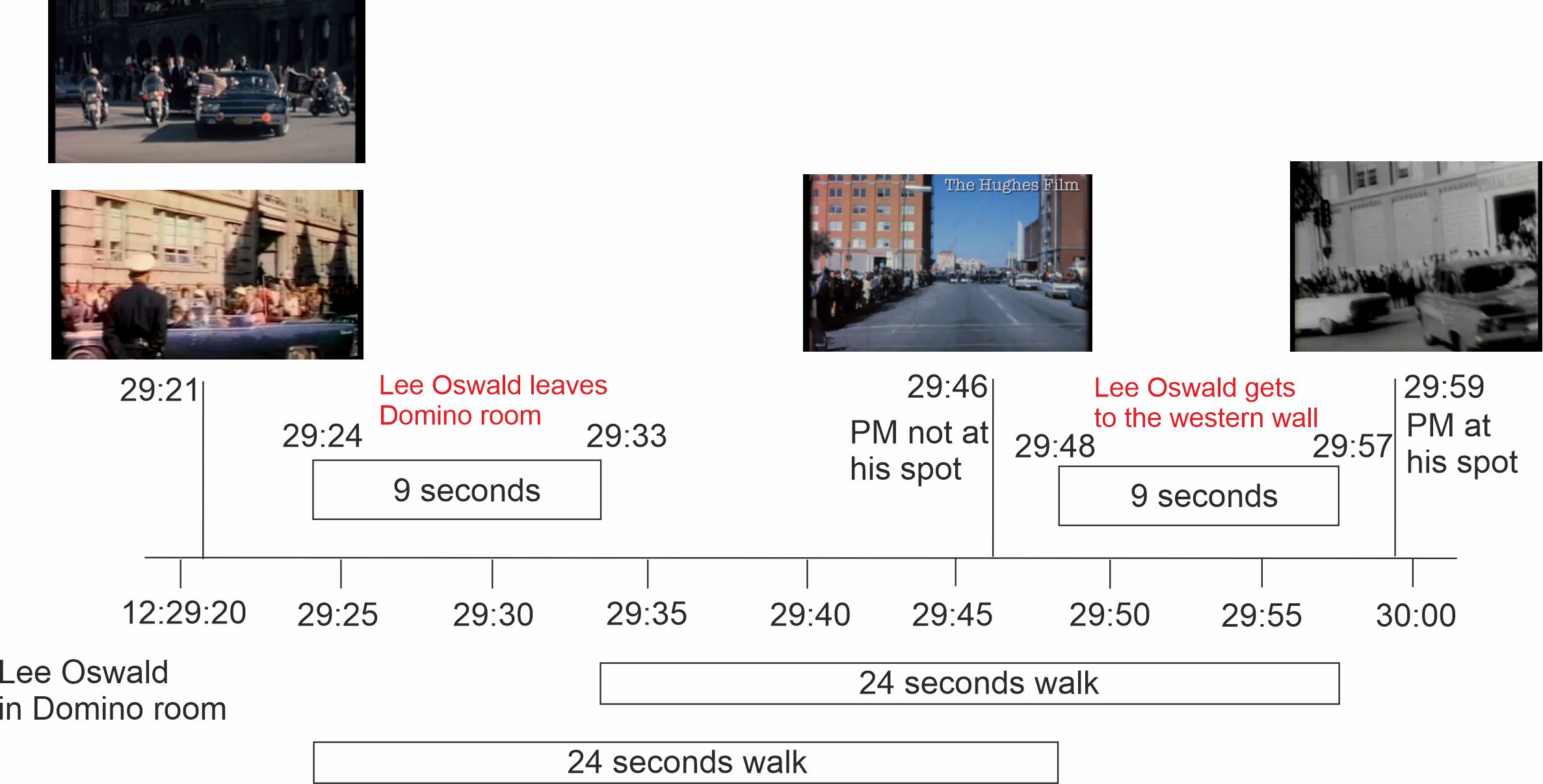
Counting backward, basically subtracting the walking time of 24 seconds, it is possible to estimate the time interval during which Lee Oswald could leave Domino room to reach the doorway not earlier than 2 seconds after Hughes and not later than 2 seconds prior to Wiegman's filming the Depository. This gives the time interval 12:29:24 - 12:29:33. The earliest moment (12:29:24) occurs 3 seconds after the limo turned from Main onto Houston street and such interval appears sufficient for someone to make a decision. However, Lee had even more time to make up his mind about leaving Domino room and going out - any instant falling within the 9 seconds after 12:29:24 would bring him to the doorway just on time to be filmed by Wiegman and not to be filmed by Hughes.
-
Returning to the possibility of increasing the resolution of existing Prayer Man images, a more generic approach appears to be deep learning for single-image super-resolution. This has been implemented in Matlab environment:
It is a convolution neural network which is first trained on many thousand images how to reconstruct a high-resolution image from a low-resolution version of the same image. Only the luminance channel is used in this method which is good because Darnell's stills are black-and-white images. The network, after being trained on still images of people, animals and various objects, is able to apply the learned network layers to a sample low-resolution image and increase the high-frequency features (e.g, details of the face) of that image. Comparison of the standard bicubic interpolation and the deep learning method showed an increase in similarity with the original high-resolution image from about 0.25 to 0.87 (1.0 being similarity with its own copy).
This is a major project requiring lengthy computations, some reading and iterative improvements. For instance, using a database of containing only human faces could train the neural network better for the purpose of detecting features in Prayer Man's face than variety of objects (animals, landscapes...). I hope to be able to embark on this in the future, however, this may not be a very near future because of a number of parallel projects and commitments.
-
Mathias:
It looks like this man did not have his frontal bone completely convex or flat but had a depression in the middle of the forehead possibly due to a combination of slightly larger brow bossing (ridges) (a very masculine feature) and a comparatively thin frontal sinus that sits between and above the brow ridges. The sunk bone above the browse ridges in the middle of the frontal bone causes two more ridges on each side - above the brow ridges and below the hairline. It look natural to me. This man could have also sustained an injury to the frontal bone causing this depression in the middle of the forehead.
-
2 hours ago, John Butler said:
Are you saying this is an altered scene?
John, not at all, I believe both scenes, the Darnell and the Wiegman, are genuine. My composite picture was meant to say that if Prayer Man's head would be the alleged female face which some people claim to be Prayer Man's head, Prayer Man would be a dwarf, only reaching to the chest level on Buell Wesley Frazier's figure.
-
2 hours ago, Mathias Baumann said:
Andrej,
You could be right about that. Maybe PULSE could be used to identify Prayer Man by trial-and-error, that means by feeding it different images of different people and see which output looks most realistic. I don't know.
But I see a technical problem here:
So it appears you need some special hardware. CUDA was developed by Nvidia. I have a AMD RADEON HD 6450 installed in my computer. I don't think it'll support CUDA, but I'll give it a try anyway.
I see the problem. They seem to run the program using the graphic card processor. My laptop also has an AMD RADEON card and, threrefore, I cannot help at the moment. I may have access to a proper computer hosting an Nvidia card at some point in the future. The article also mentions alternatives to AI, maybe those could be easier to implement.
-
While it seems that there is no dispute on this Forum about the impossibility of the alleged female to represent the full figure of Prayer Man, it may still be useful to point out that Prayer Man having the head aligned with the head of the alleged female would not match Prayer Man's figure in Darnell. The person reaching only to the "head" of the trimmed image would be either much shorter than Prayer Man in Darnell or stand on the third top step (Prayer Man in Darnell effectively stood on the second top step albeit with only his left foot).
Here is an approximate alignment of Wigeman's and Darnell's doorway with guiding lines. If the top of Prayer Man's figure in Wiegman would only reach to the top of the alleged female (the trimmed image), the distance from the horizontal bar in the aluminium door frame would be much larger than in Darnell. In contrast, the top of the head for the full figure in Wiegman aligns with the top of Prayer Man's head in Darnell pretty well given slightly different azimuth and elevation angles in both pictures. The purple line connects the right hand in both Prayer Man figures.
Using the figure of Buell Wesley Frazier as a measuring stick, the top of Prayer Man' head reaches to the lower aspect of Frazier's chin in Darnell and if the full figure of Prayer Man is used in Wiegman. In contrast, the top of the head of the alleged lady would only reach to the level of lower ribs on Frazier's chest.
I hope this ends the odd story of alleged female face in the Wiegman still.

-
Just now, Mathias Baumann said:
Andrej,
I think what Dr Rudin was trying to say is this: the output of her software is determined by the input. So if you feed it a picture of Oswald you'll get Oswald as an output. If you feed it Sarah Stanton you'll get Sarah Stanton. You can't use it to enhance the quality of the image. It's only useful if you already know who's in the picture and if you have high-quality photos of that person that you can feed into the software.
Mathias:
their work would make no sense if you only receive the same image which was used to scramble it and then reconstruct. However, I understand that authors want to be on a safe side and do not want someone falsely identifying a person in blurred images and possibly arrive at wrong conclusions. Anyway, I leave it with you whether you want to follow this line, and would understand fully if you decide not to.
-
14 minutes ago, Mathias Baumann said:
Can you point me to a source where I can download the entire film in high resolution?
Mathias:
there is no Darnell film of high resolution available to the research community, unfortunately. I work with a set of images which I believe were exported by Robin Unger several years ago. I can upload the folder onto Dropbox if you wish.
The image I believe contains facial features that could possibly be enhanced using AI is this:
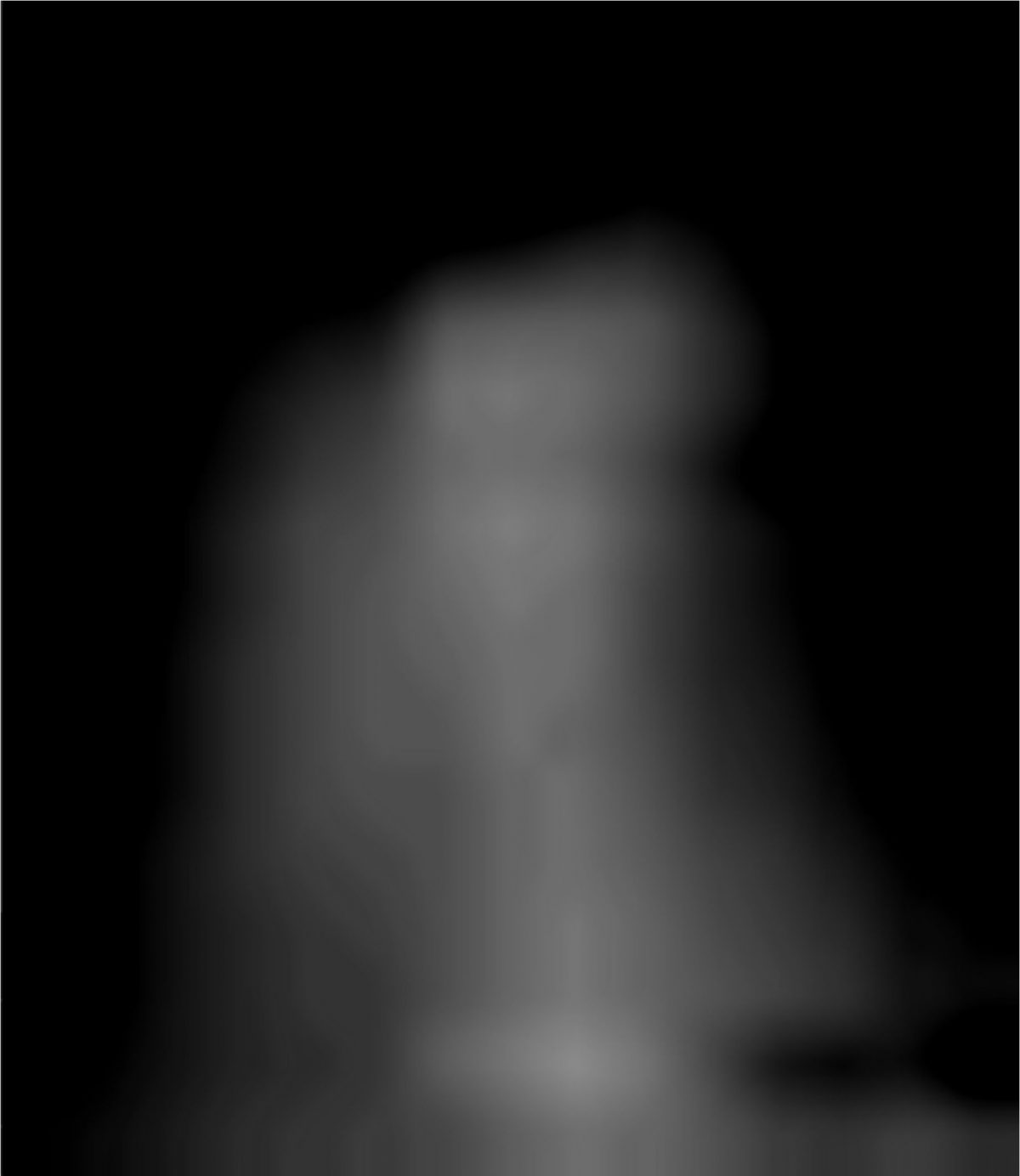
Here is the same image (the left-most one) with progressively more intense overlays of Lee Oswald's head. Amazingly, the orientations of Prayer Man and Lee Oswald's head in both images are practically identical.
In the original image, the small bright spot below the chin is most likely Adam's apple. Lee had an elevated nasolabial region, rising toward the upper lip. I guess this can be seen in the original picture. If there is any picture offering a chance of revealing Prayer Man's facial features, it would be this one.

-
Mathias:
please let me know if I can be of any assistance. Once you upload their libraries into Python and run the code with their sample image, I would prepare a suitable image of Prayer Man's face. The Darnell still we all use in our posts, although giving some interesting details, has the nose and eyes areas burned out, and no AI could reconstruct anything unless there is at least some signal in the image.



The inevitable end result of our last 56 years
in Political Discussions
Posted
As someone living across the Ocean, I watched the US elections with great interest as I believed, together will millions across the world, that Biden's win would pave way to a human-oriented politics capable of solving many burning problems of today. Joe Biden is a good and wise man, very much needed during these difficult times.
However, I wonder what can Biden's win mean to our cause - the JFK assassination. Will he agree to open the remaining, perhaps the most sensitive documents pertaining to Lee Oswald? And what about Kamala Harris? Is she not the woman who basically opposed recent Sirhan Sirhan's appeals for a pardon?